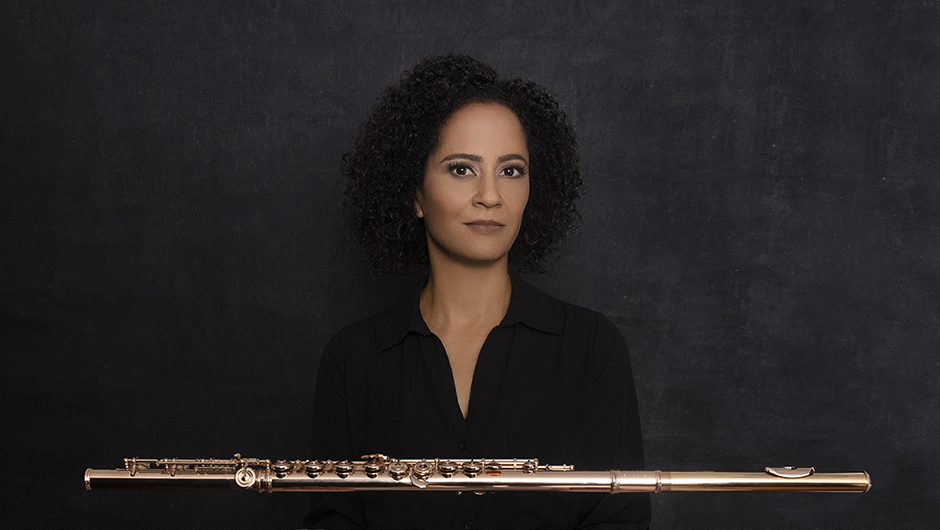Flutist Jennifer Grim has always wanted to create an album of timeless music but of living composers. This declaration isn’t surprising, given the album, “Through Broken Time,” which is made up of songs with old classical charm but with new, modern chops.
In a recent interview, Grim explained how she had plotted this beautiful collection of contemporary music for several years. What some people would call a cross between Afro-Modernism and Post-minimalism. The kind of repertoire she played in the New York City music scene, where she lived for seven years after graduating from Yale University—and where her idea of one day releasing an album was born.
In the history of the recording business, the album has always been the dominant form of recorded music, she observed. And many times, it’s tough for musicians to get funding and support from a label. Grim’s idea resurfaced in the fall of 2019 when she started working as an associate professor of flute at the Frost School of Music at the University of Miami. When she learned about the Provost’s Research Award, an annual award offered to faculty, she applied for recording project funding, and got it!
This past September 23, “Through Broken Time” was released by New Focus Recordings, an artist-led collective label featuring releases in contemporary creative music, as well as new approaches to the older repertoire. The label was founded by guitarist Dan Lippel, composer Peter Gilbert in 2004, and composer/engineer Ryan Streber in 2004, formed around the production of the first five albums in the catalog.
Track list
1. Tania León: Alma
2. Alvin Singleton: Argoru III
3. Julia Wolfe: Oxygen, for 12 flutes
4. David Sanford: Klatka Still: I.
5. David Sanford: Klatka Stil: II.
6. Allison Loggins-Hull: Homeland
7. Valerie Coleman: Wish Sonatine
8. David Sanford: Offertory: I.
9. David Sanford: Offertory: II.
“Dan and I have known each other for more than 20 years,” said Grim. “We were at a summer festival together way, way back when we were students and before his label even started, which is very successful today. So many leading contemporary composers and performers have their works on this label, and so I'm really thankful that he agreed to present my first album on New Focus Recordings.”
Grim is a classical flutist, so the album is categorized as a classical album, but there are some elements of jazz and other improvised sounds in the piece. There are two works by composer David Sanford, who has worked with Grim for many years. “In this album, he wrote me a world premiere piece, called Offertory, which is a tribute to John Coltrane, a famous American jazz saxophonist, bandleader, and composer. Perhaps one of the most influential and acclaimed figures in the history of jazz and 20th-century music.”
Coltrane has a very famous recording called A Love Supreme, which is a very spiritual album. Grim liked the idea of having that sort of spiritual, religious context in her collection of songs, which sounds like it was improvised, but was all written out. “There's a certain freedom in the music that is very virtuosic, yet also very controlled, because as a classical musician, I'm not as comfortable improvising. But I really loved the idea of it, and so it allowed me to have that freedom, but also have a bit more control of the boundaries.”
Grim’s album is very rhythmically driven. You can’t help to fall in love with its high-energy music. And, because of the jazz influence, led Grim to the album's title, “Through Broken Time.”
“Broken time is actually a jazz reference,” she said. “It has to do with the interplay of strong and weak beats in jazz music. And so, it's like time is being broken—the idea of going through this broken time in terms of music.”
The first piece on the album is called Alma [Soul] by Afro-Cuban-American conductor and composer of both large-scale and chamber works, Tania León. In this piece, Grim takes us to a day in the life of a bird. This is a recurring theme in the album, like the monumental, 15-minute, flute solo piece called “Oxygen,” a rapid-fire composition by Julia Wolfe.
“The piece is originally written for 12 flutists, but I recorded all twelve parts myself,” said Grim, who admitted this to be by far the most challenging piece to record. “I had to record each part individually, which ended up totaling over three hours of music. The recording engineer then layered each part on top of one another during the editing process, creating the effect that many people are playing.”
Every track of this album was recorded on campus at Maurice Gusman Concert Hall’s recording studio. Grim’s producer and engineer was her colleague, Svetoslav Stoyanov, director and associate professor of Classical Percussion Studies. “What an experience!” concluded Grim.
“Svet pushed me, challenged me, and encouraged me every step of the way. For two artists to come together as we did, and for all of this to happen . . . I’m so very grateful.”
